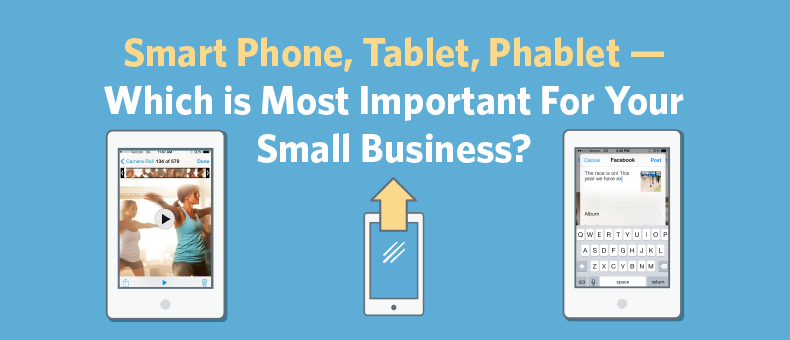
A friend was ordering his iPhone 6 when they first became available. Comparing the iPhone 6 to the iPhone 6 Plus, he wondered out loud, “Why would anyone want that big thing?”
But as he continued through the online ordering process, he soon discovered that a lot of people wanted them. They were already severely backordered.
Perhaps at the beginning many people wanted them just because they boasted the biggest screens available on a smartphone. But now, the way people are using those big screens has emerged and we’re beginning to understand that people use the various “flavors” of mobile devices for differing reasons — and this will impact your small business mobile marketing strategy.
Phablet popularity
Going back to the iPhone 6 Plus, it’s what we call a phablet (PHone-tABLET) and since the release of the iPhone 6 Plus, it has been joined by other mega-screened smartphones. According to an article in Adobe’s CMO, phablet users are serious media consumers, streaming videos, sports and music at a rate much higher than other mobile devices.
Also, phablets are definitely drawing users away from full-sized tablets and phablets are much more likely to be used in a mobile setting. And by used, I mean interacted with: scrolling, pinching, tapping, listening to music, etc. On the other hand, a standard tablet may be the ideal “second” screen when a consumer is watching a television show that offers bonus content, such as Twitter interaction.
Although this area is quickly evolving, you need to make sure these kinds of trends get onto your small business mobile marketing radar screen. And before I go further, let me slice this mobile hardware pie one more way: operating system. You need to be sure that your mobile marketing content functions across iOS, Android, and Windows Mobile.
When you design your small business mobile website, make sure it works on the smaller screens. Consider all aspects of the design, including forms and buttons. One good thing with phablets, is that the folks with fatter fingers will have an easier time!
User demographics
Also consider demographics of your small business customers. Because they’re often toting purses rather than stuffing items in pockets, women tend to carry the phablets more than men. Age wise, Baby Boomers use these devices far less than members of generations Y and X — only about half as often.
Of course, Apple just released a new variable into this equation: the Apple watch. It will be important to see what impact this has on users. Which demographic adopts it at a faster pace? How will it be used?
I want to combine two thoughts for the takeaway here: First, as I said earlier this sector is rapidly changing. But with that you need to consider a second point: Mobile is more important than desktop today and that will not be changing anytime soon, if ever.
Ready to harness the power of mobile for your business? Check out Constant Contact’s mobile webinar recording to help you get started.
This article was syndicated from Business 2 Community: Smart Phone, Tablet, Phablet — Which Is Most Important For Your Small Business?
More Business & Finance articles from Business 2 Community:




